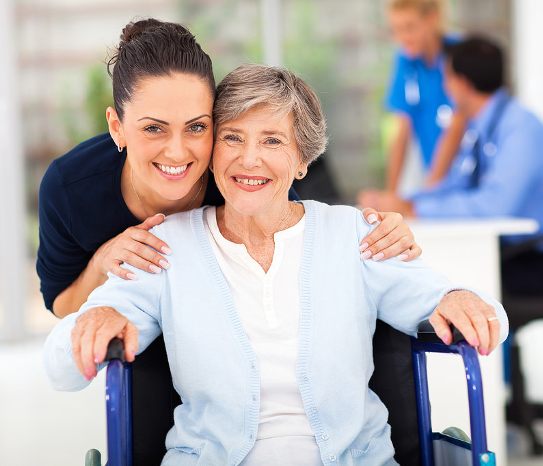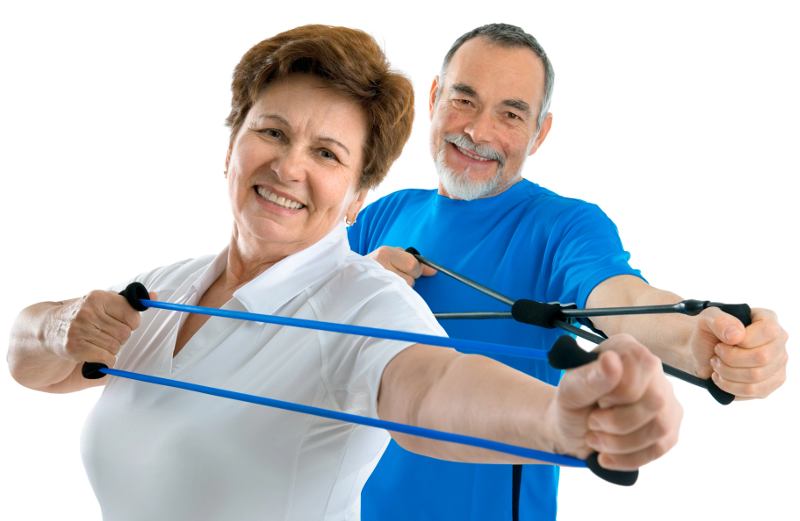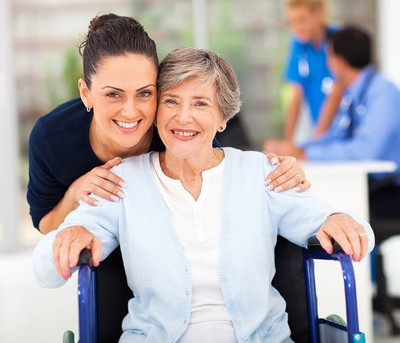 26th Jan 2017
26th Jan 2017
How to Treat the Top 10 Health Concerns in the Geriatric Community - Part 2

Welcome to part 2 of How to Treat the Top 10 Health Concerns in the Geriatric Community where we’ll continue to explore the top difficulties the elderly patient population faces and the best ways to treat them. If you missed part one, you’ll find it here.
In our first installment we explored how physical therapy is a great tool to use to help specific elderly patient issues including:
- Joint pain or arthritis
- Osteoporosis
- Alzheimer’s
- Post-stroke rehabilitation
- Hip replacement
In this installment, we’ll continue to discuss ways physical therapy can help the geriatric community as it faces specific issues related to aging including age-related diseases and injuries, specifically:
- Knee replacement
- Loss of mobility
- Fall risks
- Diabetic Neuropathy
- Heart Disease
Treating the Top 10 Health Concerns in the Geriatric Community Part 2

Knee Replacement: In the last 10 years, the occurrence of total knee replacement procedures increased by 217%(Source). The most common risk for needing a total knee replacement in the elderly community is due to osteoporosis, a degenerative joint disease that leads to weak and brittle joints. When a patient undergoes a total knee replacement the goals are to:
- Reduce pain in knee joint
- Improve knee mobility
- Return range of motion
- Restore function in daily activities: ie. walking, climbing stairs, etc.
Physical therapy after a total knee replacement procedure is an important element in helping an elderly patient return to daily activities. To do so, a physical therapist will create a regimen that focuses on immediately reducing pain in order to get a total knee replacement patient ready to participate in necessary strengthening exercises.
- Cold Compression Therapy: Using a cold compression therapy device after total knee replacement is a great way to reduce any pain or inflammation a patient may have after their procedure. What’s more, a cold compression device may be used after any strengthening exercises that may trigger tenderness or swelling.
Loss of Mobility: There is an old adage that “if you don’t use it, you lose it” which is the perfect saying when it comes to mobility. This is where physical therapy comes in. As patients age, they may naturally lose skills in strength, flexibility and balance. This can make maintaining helathy fitness challenging and lead to a loss in day to day functioning. As a matter of fact, loss of mobility can create profound social, psychological, and physical difficulties.
The University of Alabama researchers suggest asking these two questions of our elderly populations:
- For health or physical reasons, do you have difficulty climbing up 10 steps or walking one-quarter of a mile?
- Because of underlying health or physical reasons, have you modified the way you climb 10 steps or walk a quarter of a mile?
- Read the full article here: 2 Questions That Can Reveal Mobility Problems in Seniors

If a patient answer is “yes” to either of these questions, they are a good candidate for physical therapy for strength and balance training and/or occupational therapy to help improve the ability to perform daily tasks.
- Resistance Bands Training: Resistance bands offer an excellent alternative to bulky weights for strength training with seniors. Not only are resistance bands easy to use, but they offer far less impact on joints, making them a nice alternative to gym equipment too. With varying strengths, it’s possible to customize a strength workout for each individual patient’s strength level while also offering variety and increased resistance as strength increases.

Fall Risks: As we noted in our last section, fall risks are of prime concern for most seniors, particularly those who are facing a loss in mobility or recovery from an illness or injury. About 1/3 of the population over the age of 65 experiences a fall once a year. There are certain risks that increase the likelihood of a fall including:
- Weakness in the legs
- Difficulty balancing
- Vision problems (cataracts, macular degeneration, wearing bifocals)
- Certain medical conditions: Parkinson disease, stroke, or diabetes
- Chronic, progressive diseases like: Dementia and Alzheimer disease
- Certain drug interactions
- Using a cane or other walking device
- Home hazards (area rugs, pets)
- Low or high blood pressure
In order to create an effective regimen for patients who have either sustained a fall or are a possible fall risk, it’s important to perform a Fall Risk Assessment.
- Handheld dynamometer: Using a handheld dynamometer, a physical therapist can do a complete fall risk assessment that includes necessary manual muscle testing. This will not only establish a baseline of strength for the individual patient, but also identify any muscular deficiencies that can increase a person’s risk of falls.
Diabetic Neuropathy: 25.9% of seniors over the age of 65 years old will be diagnosed with diabetes. With a diagnosis of diabetes comes the risk of diabetic neuropathy, a painful nerve condition that primarily effects the legs and feet and if left untreated can lead to the need for lower limb amputation. Diabetic neuropathy can cause a whole host of issues including:

- Numbness and tingling
- Loss or absence of sensation
- Sharp or burning pain
- Increased sensitivity to touch.
- Clumsiness or decreased coordination
- Weakness or even paralysis of affected limbs
- Intolerance to heat
- Decreased ability to participate in daily activities
Patients with diabetes are encouraged to have sensory screening at least once a year to help prevent and identify early cases of sensory neuropathy.
- Sensory Monofilament Foot Testing kit: With a tactile sensitivity testing kit, varied sizes of monofilaments are important because it can identify any possible sensation loss. When testing, the physical therapist starts with the 2.83 monofilament. If the patient responds to the stimulus in all testing areas with this size, they’re considered to have normal sensation. However, if the patient doesn’t respond to stimulus with the 2.83 monofilament, there has been some sensation loss. Testing continues with the next largest monofilament and repeated to determine how much sensation is lost.
Heart Disease: Heart disease is the leading cause of death in both men and women in the United States accounting for 1 out of every 4 deaths. Heart disease puts elderly patients at risk for heart attacks and strokes. Cardiac rehabilitation is specialized physical therapy designed to improve a patient’s cardiovascular health after they’ve experienced a heart attack. Therapeutic exercise is an important element in improving cardiovascular health after a heart attack, but the key is start gradually and building slowly over time.
- Recumbent Bike: A recumbent bike, like the Nautilus R7000, is a great way to start a post heart attack patient off with cardiovascular exercise. Not only is the Nautlius Recumbent bike equipped with a heart rate monitor, it comes programmed with 4 heart rate workouts.
As innovations in aging, disease treatment and prevention continues to evolve people will continue to live longer, healthier lives. However, knowing how to treat the challenges that face our aging population is important in helping them continue to thrive. In that spirit, we want to share a “Tips for Healthy Aging Infographic” to help empower your elderly patients with tips on how they can lead healthy and active lives, no matter what their age.





